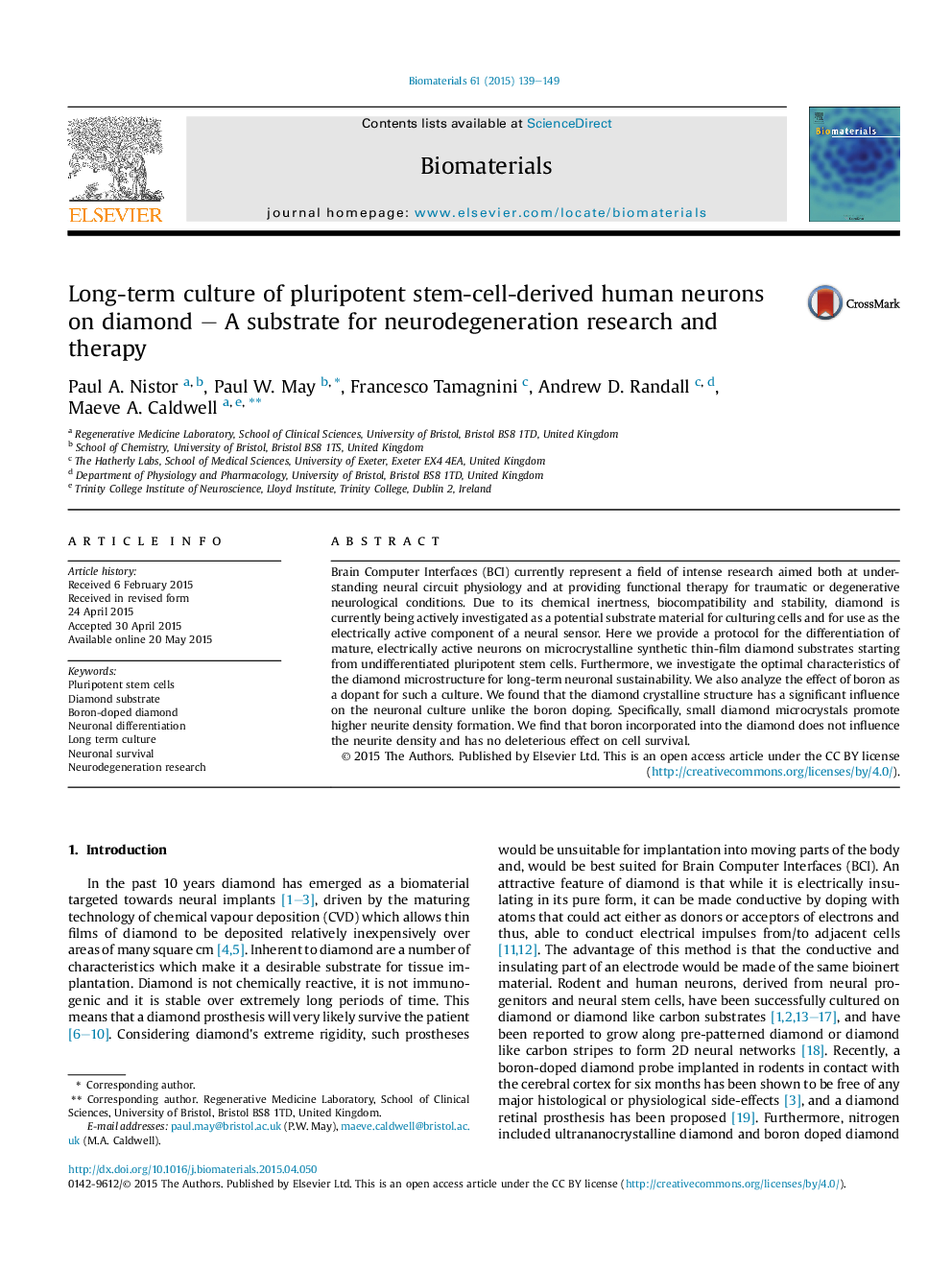| Article ID | Journal | Published Year | Pages | File Type |
|---|---|---|---|---|
| 6485574 | Biomaterials | 2015 | 11 Pages |
Abstract
Brain Computer Interfaces (BCI) currently represent a field of intense research aimed both at understanding neural circuit physiology and at providing functional therapy for traumatic or degenerative neurological conditions. Due to its chemical inertness, biocompatibility and stability, diamond is currently being actively investigated as a potential substrate material for culturing cells and for use as the electrically active component of a neural sensor. Here we provide a protocol for the differentiation of mature, electrically active neurons on microcrystalline synthetic thin-film diamond substrates starting from undifferentiated pluripotent stem cells. Furthermore, we investigate the optimal characteristics of the diamond microstructure for long-term neuronal sustainability. We also analyze the effect of boron as a dopant for such a culture. We found that the diamond crystalline structure has a significant influence on the neuronal culture unlike the boron doping. Specifically, small diamond microcrystals promote higher neurite density formation. We find that boron incorporated into the diamond does not influence the neurite density and has no deleterious effect on cell survival.
Keywords
Related Topics
Physical Sciences and Engineering
Chemical Engineering
Bioengineering
Authors
Paul A. Nistor, Paul W. May, Francesco Tamagnini, Andrew D. Randall, Maeve A. Caldwell,
